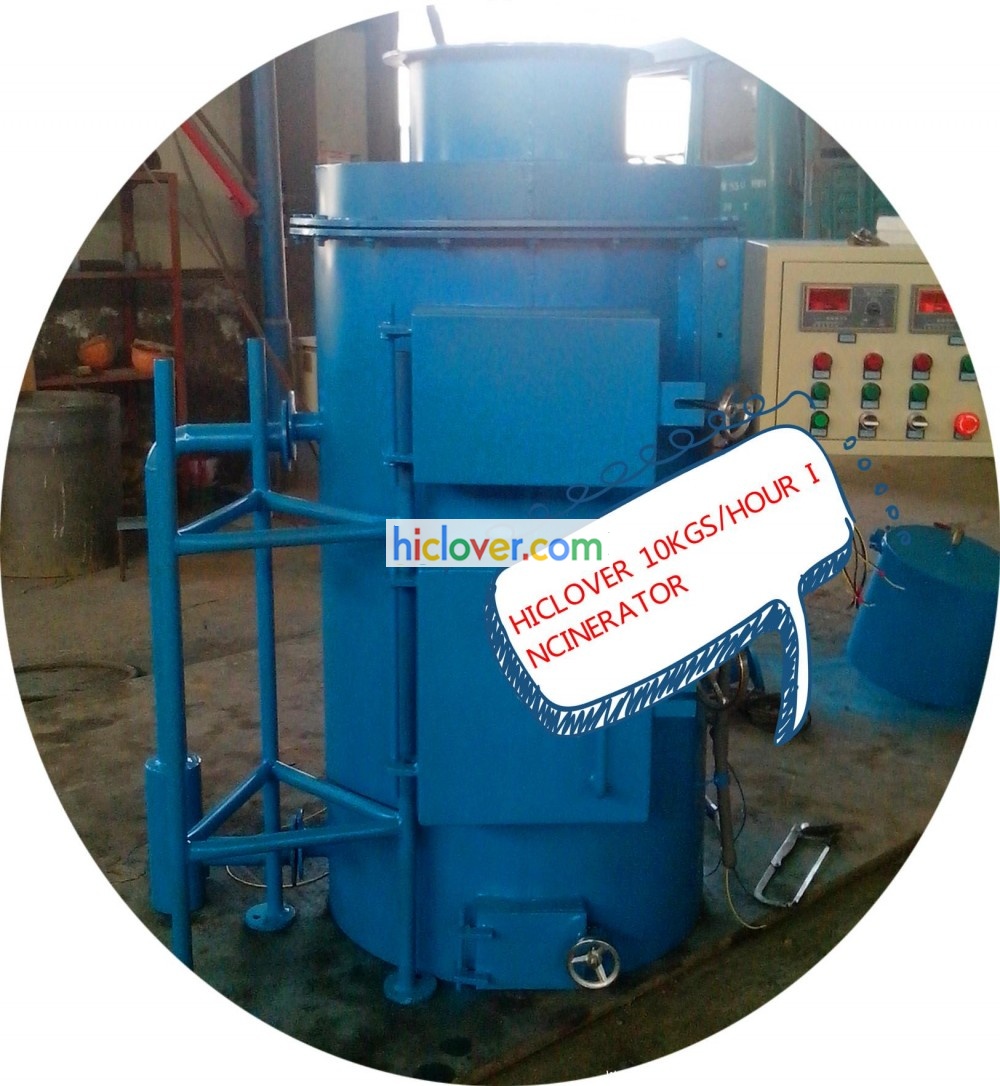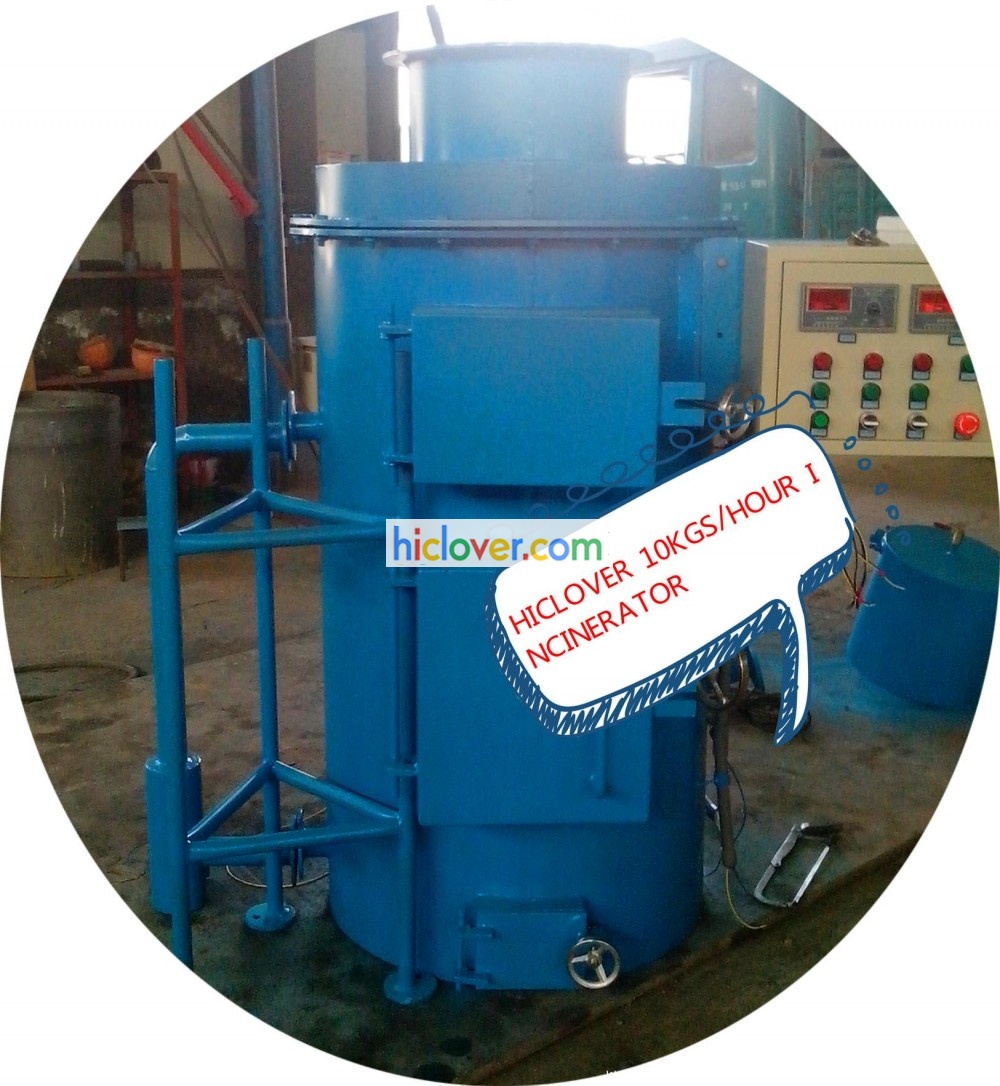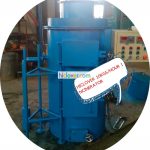Doubel Combustion Chamber
All Incinerators are Doubel Combustion Chamber with One Fuel Burner Each. After Burner Technology for Completely Combustion and Cleaner World.
Read MoreHigh Temperature Incineration
Temperature Range 800 Degree to 1200 Degree in Combustion Chamber. Temperature Thermocouple Monitor and Controller. High Quality Fire Brick and Refactory Cement.
Read MoreGet Lastest News
There are latest incinerator news like technical, public news, business tender for medical waste incinerator,animal incineration, pet cremation
Read MoreNanjing Clover Medical Technology Co.,Ltd.
Email: sales@clover-incinerator.com | Tel: +86-25-8461 0201
Regular model incinerator for market with burning rate from 10kgs to 500kgs per hour and we always proposal customer send us their require details, like waste material, local site fuel and power supply, incinerator operation time, etc, so we can proposal right model or custom made with different structure or dimensions.
Incinerator Model YD-100 is a middle scale incineration machine for many different usage: for a middle hospital sickbed below 500 units, for all small or big size family pets (like Alaskan Malamute Dog), for community Municipal Solid Waste Incineration, etc. The primary combustion chamber volume is 1200Liters (1.2m3) and use diesel oil or natural gas fuel burner original from Italy.
Latest Post
Animal Crematory
Incinerator Medical Waste Maximum Capacity
Basic Info.
Product Description
Nanjing Clover Medical Technology Co., Ltd. is a leading waste incinerator manufacturer in China.
Key Features: * All models with Dual combustion chamber. * Stainless Steel chimney/stack, long life. *according to sequence * High fever, long life of incinerator. * Free or minimal installation on site. *according to order * New Design for pet animal cremation business. * One year warranty on incinerator and components in stock.
| Items/Model | YD-10C | YD-20C | YD-30C | YD-50C |
| Burning Rate (kgs/Hour) | 10 kgs/Hr. | 20 kgs/Hr. | 30 kgs/Hr. | 50 kgs/Hr. |
| Feed Capacity (kgs) | 40 kgs | 40 kgs | 50 kgs | 80 kgs |
| Equipment Weight | 1200 kgs | 1200 kgs | 1800 kgs | 2200 kgs |
| Picture | ||||
| Primary Chamber (Liters) | 200 | 200 | 250 | 400 |
| Secondary Chamber (Liters) | 140 | 140 | 140 | 140 |
| External Dimensions (cm) | 170x140x160 | 170x140x160 | 170x140x190 | 180x160x200 |
| Internal Dimensions (cm) | 55x55x65 | 55x55x65 | 55x55x85 | 70x70x85 |
| Oil Tank(Liters) | 50 | 100 | 100 | 150 |
| Door Opening (cm) | 38 x 48 | 38 x 48 | 38 x 48 | 45×55 |
| Chimney (M) | 5 | 5 | 5 | 5 |
| Chimney Type | Stainless Steel | Stainless Steel | Stainless Steel | Stainless Steel |
| Secondary Chamber | YES | YES | YES | YES |
| Mix-Combustion Chamber | YES | YES | YES | YES |
| Smoke Filter Chamber | YES | YES | YES | YES |
| Combustion Fuel | Oil/Gas | Oil/Gas | Oil/Gas | Oil/Gas |
| Residency Time | 2.0 Sec. | 2.0 Sec. | 2.0 Sec. | 2.0 Sec. |
| Temperature Monitoring | YES | YES | YES | YES |
Application Scope: 1. Hospital& clinic: Iatric Waste, Infectious Waste, Dressing, Bio-Waste, Medicine. 2. Slaughter House &Pet Hospital &Farm: Dead Animal, Bio-Waste. 3. Community & Sea Port & Station: Municipal Solid Waste, etc. 4. Laboratories, Remote Locations, Disaster Relief Operations, Animal Cremation
Medical Incinerator
hiclover 10kgs per hour incinerator


|
|
|
|
Equipment Technical Specifications |
Model |
|
YD-10 |
Feed Capacity |
|
Typical 20 kgs per feed |
Burning Rate |
|
Typical 10 kgs per hour |
Burning Time per Feed |
|
2 hours |
Voltage |
|
220V |
Fuel |
|
Diesel oil |
Burner |
|
Italy Burner |
Feed Mode |
|
Manual |
Fuel consumption (Oil) |
|
5.4-12.6 Kgs/Hour |
External Dimensions |
|
100 x 100 x 160cm (mainbody) |
Internal Dimensions |
|
50 x 50 x 80cm(Primary Chamber) |
Waste combustion chamber |
|
200Liters |
Post Combustion Chamber |
|
100Liters |
Oil Tank Capacity |
|
50 Liters |
Door Opening |
|
35 x 35cm |
Chimney |
|
3.0M |
Gross Weight |
|
1000kgs |
Chamber Material |
|
Refractory Concrete |
Max. |
|
126,000Kcal/Hr. |
|
|
Operation Technical Specifications |
Chamber temperature |
Chamber Anti-Rate
|
8000C -10000C |
Residency time |
13500C |
|
0.5 Sec. |
Burning efficiency |
|
>98 percent |
Waste Lower Calorific Power |
3000Kcal
Tel: +86-25-8461 0201
Website: www.hiclover.com
Email: [email protected]
Email: [email protected]
Baltimore teens take out the trash
It’s the threat of dangerous air pollution that has students at Curtis Bay’s Benjamin Franklin High School leaving the classroom and demonstrating in the streets of Baltimore.
In Curtis Bay, a neglected waterfront neighborhood in the northwestern fringes of Baltimore, an alliance of environmental activists and local groups–such as an energetic and creative band of high school students–has succeeded in holding off the building of an enormous trash incinerator project.
The students wowed members of the Baltimore Board of Education this May with a presentation that combined carefully researched environmental and public health evaluation with a hip routine that had board members up on their toes. Greg Sawtell, an organizer with Baltimore-based United Workers (one of several organizations allied against the incinerator), says talks with school board members since then have left him optimistic that they will oppose the project.
Even though planning work on the incinerator started last year, full-scale construction is postponed, and the projected completion date was pushed to 2016 from an initial estimate of 2013. Opponents are reluctant to claim sole credit for the delays, as there also have been financing and regulatory issues, but believe their efforts are sharpening scrutiny and slowing progress.
Talk of the so-called trash-to-energy incinerator plant started some five years ago, after chemical manufacturer FMC Corp closed a pesticide plant, eliminating 130 jobs (such as 71 union jobs with the United Steelworkers) and leaving vacant a big parcel of land zoned for heavy industry. The site straddles the Curtis Bay and Fairfield areas of this city, parts of which have big African-American populations. To many community and political leaders in this deindustrialized and job-starved section of the city–that lies far from the famed Inner Harbor or Fells Point amusement districts–it looked like a blessing when Energy Answers Inc., an Albany, New York-based power development firm, appeared on the scene to indicate a plant that would burn construction and commercial waste to generate electricity. Energy Answers billed the plant as a way to restore up to 200 jobs and supply clean, energy. The proposal came with enthusiastic endorsements from local political leaders, especially Maryland Gov. Martin O’Malley and town Mayor Stephanie Rawlings-Blake.
Originally, Energy Answers struggled to find loans and missed a deadline to secure federal stimulation money. But in May 2011, the project got a major boost when O’Malley signed legislation to make the plant profitable through a complicated pollution credits scheme that would funnel cash to Energy Answers for generating so-called clean power. (A couple of days later, Energy Answers gave $100,000 in campaign donations to the Democratic Governors Association, chaired by O’Malley.)
But for locals, the bloom was already coming off the rose. It had emerged that an estimated 400 to 600 exhaust-spewing trucks carrying waste tires, metals, plastics and building materials would travel through the streets of Curtis Bay every day to feed the plant. The incinerator itself would burn up to 4,000 tons of waste every day for decades– increasing even more alarming public health issues.
“What lots of people do not realize is just how dirty these plants really are,” says Mike Ewall, founder and co-director of Energy Justice Network, a national organization devoted to helping communities fight dirty energy growth. “They’re much worse than coal or anything else. And this could be the biggest such plant in the nation.” Curtis Bay is already the most polluted zip code in Maryland, Ewall notes, adding that low-income areas of color are often used as dumping grounds just because they lack the political power to fight back.
It’s the threat of dangerous air pollution that has students at Curtis Bay’s Benjamin Franklin High School leaving the classroom and demonstrating in the streets of Baltimore. In their biggest action, in late 2013, more than 100 protesters marched from the school to the site of the proposed incinerator–just a mile off.
Present Benjamin Franklin graduate Audrey Rozier is a pioneer of Free Your Voice, the pupil group intends to stop the incinerator, as well as the co-author of a rap song dedicated to the effort. “We have our rights according to the amendments / But why do we feel like we have been so resented / Ignored, pushed to the side where opinions do not matter,” goes one verse.
Rozier says the song, which she has performed all over the city, has helped educate the local community and a wider Baltimore audience. “What was amazing to me at the beginning was that people outside the community were going to [build the incinerator], but the people who live here did not know anything about it,” she says. “I think that’s changed.”
That disconnect between the political elite and the communities most affected by its decisions is at the core of the fight over the Curtis Bay incinerator, says Sawtell. In Baltimore and elsewhere, decisions on economic growth policies are made by a political and economic elite with little or no input from the working residents who have to live daily with the consequences. “Community members we have talked to say no one asked their opinion before the project was announced,” says Sawtell. “Somehow I think if it was the children of Gov. O’Malley, or the children of Mayor Rawlings-Blake, who were going to be poisoned, the choice could be different.”
The effort is drawing increasing support, most recently from the nearby Anne Arundel County chapter of the NAACP. Meanwhile, excitement for the plant among politicians seems to have chilled in the face of the protests, Sawtell says, with near-silence on the issue from Mayor Rawlings-Blake in the past couple of years. The Democratic candidate for governor in this year’s election, Anthony Brown, declined to take a position.
If the building delays are any indication, even Energy Answers may be losing interest, although the company tells In These Times it’s in”confidential talks for waste and energy sales” and plans to proceed with the project. Sawtell, however, believes that a significant push from opponents now could kill the program once and for all.
If the construction delays are any indication, even Energy Answers may be losing interest, although the company tells In These Times it’s in “confidential discussions for waste and energy sales” and plans to proceed with the project. Sawtell, however, believes that a major push from opponents now could kill the plan once and for all.
by: http://www.radiofree.org/us/baltimore-teens-take-out-the-trash/

















